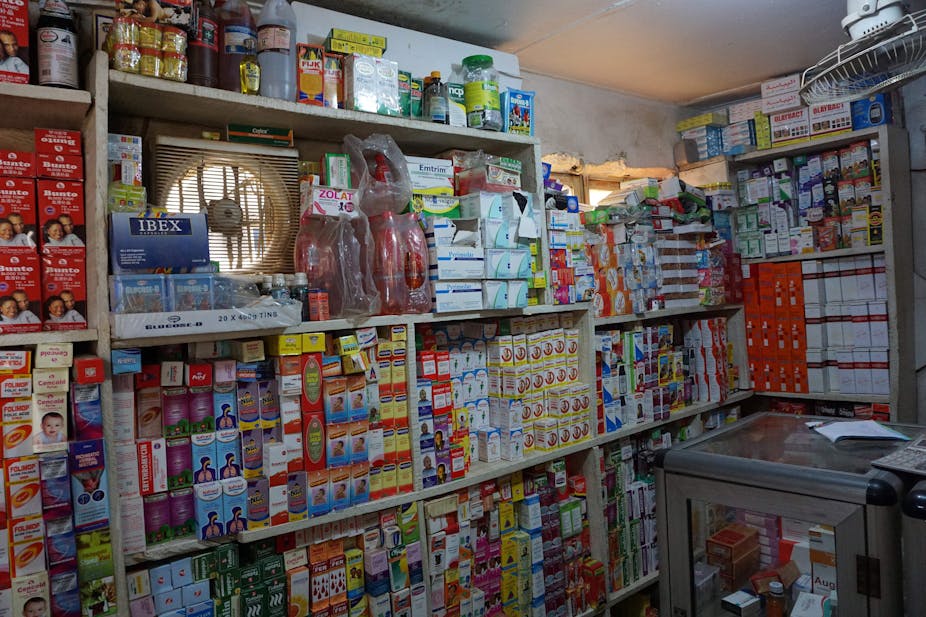More than ever, the world is facing a challenge of non-medical use of prescription drugs among people of all ages, genders and occupations. Evidence shows that pharmaceutical opioids (tramadol, codeine, or morphine), barbiturates such as pentobarbital sodium, benzodiazepines (diazepam and alprazolam), and amphetamines are the most common types of prescription medication used in a non-medical context.
According to the International Narcotics Control Board there was a tripling in the consumption of pharmaceutical opioids between 2014 and 2016.
Unfortunately, abuse of pharmaceutical drugs is as dangerous and deadly as any other psychoactive substance. And the chemical components and effects of many pharmaceutical drugs make them particularly addictive.
In Nigeria, we conducted research into the non-medical use of pharmaceutical drugs among hairstylists and mechanics in Osogbo, a southwest region of the country.
My findings showed that tramadol and codeine were the most common drugs used for non-medical purposes. They also showed that prevalence was higher than the 4.7% use of non-medical drugs among adult Nigerians as reported in a nationwide survey on drug use by the United Nations Office on Drugs and Crime in 2018.
For many reasons more people are shifting from the use of conventional psychoactive drugs such as cannabis, cocaine and heroin to pharmaceutical drugs for a non-medical purpose. These reasons include sensation seeking, energy boost, to feel better and to cope with stress, frustration and unpleasant life events.
Findings
The study population for the research was made up of 64 hairstylists and 54 mechanics. Ninety four were males and 24 females. Their ages ranged between 18 and 45 years.
About 20% of the participants reported non-medical use of tramadol in the previous 12 months, 18% used codeine, 10.1% used other unnamed painkillers, and 1.7% used Rohypnol. A further 3.2% reported the use of other tranquilisers for a non-medical purpose within a one year period.
The results also showed that the non-medical use of pharmaceutical drugs was more prevalent among mechanics. For instance, 10.2% of the mechanics compared to 6.6% of the hair stylists reported non-medical use of tramadol within a period of one month.
We found that participants’ level of education and living situation was associated with their non-medical use of pharmaceutical drugs. This usage was most prevalent among participants who had received formal education at a higher level. These were participants with either complete or incomplete tertiary education (55.6%).
And we found that drug use was more prominent among persons living with friends (66.7%). We recorded 54.1% among people living alone and 50% of those living with their children alone, compared to people living with spouse and children, parents, and other relatives.
Our research was a pilot study. We intend to conduct a follow-up study with wider coverage among the target population to reinforce the findings of the present study.
Solutions
Drug abuse, including the non-medical use of pharmaceutical drugs at the workplace, exacts a heavy price.
As a result a lot of effort has been put into reducing drug abuse.
Over time different solutions have been proposed.
Based on experience garnered from my clinical practice and research, I would recommend three solutions.
The first is primary intervention. This involves effort aimed at protecting an individual from becoming exposed and vulnerable to drug use. Activities at this level also include reducing environmental stressors and building people’s abilities to cope with life events that may particularly make them susceptible to drug use.
The main aim of the primary intervention is, therefore, to prevent drug use from occurring. For instance, we found that among the hairstylists and mechanics we studied, their work, leisure and other activities are not well balanced.
Intervention at the secondary level involves putting in place a functioning system that can assist individuals who are already using drugs to cut down and eventually quit.
The secondary intervention also involves preventing drug users from progressing to a harmful level of use which compromises or impairs their health, relationships, finance, academics or work and overall mental well-being.
At a secondary level of intervention, institutions and organisations are encouraged to provide an environment that enables well-being and discourages drug use.
Irrespective of the preventive or intervention measure put in place for any problem behaviour such as drug abuse, it is evident that some people will always be caught up in the web.
At this level, the aim is to minimise the impact of drug use on an individual and organisation.
Lastly, there is relapse prevention. People who have been to treatment are assisted not to return to drug use. Several forms of rehabilitating strategies are also employed at this level to help people regain their well-being and possibly become optimally productive at work again.

